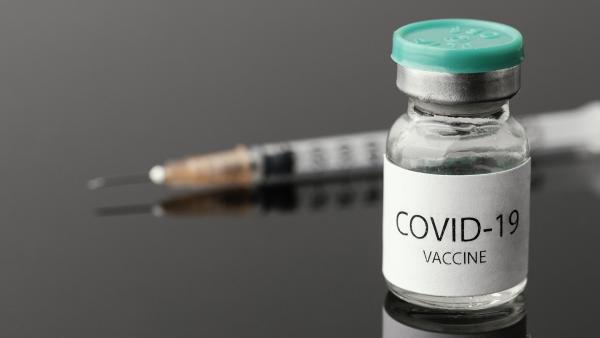After more than a year of masking, social distancing and far too much time spent in isolation, pandemic fatigue has set it and Americans seem to be running out of anxiety to expend on COVID-19. The obvious question on everybody's mind with vaccine distribution in full swing is, “when will this end?” If recent evidence of vaccine uptake is any indication, we may be well on our way to putting the pandemic behind us. [1]
According to a new ABC News/Washington Post poll, overall acceptance of COVID-19 vaccines is on the rise in the US. Concern about the safety of Johnson &Johnson's shot remains relatively high and there are still pockets of hesitancy among certain demographic groups, but the poll results are still very encouraging.
The real challenge lies in convincing the relative handful of Americans who remain vaccine hesitant to get their shots. Let's look at the numbers and then consider how we might get over that last hump.
Americans are getting their shots
First, the good news. “Seventy-four percent [of those surveyed] have received at least one dose (56%) or say they definitely or probably will get vaccinated (18%), up 9 percentage points from mid-January,” ABC reported. These results are quite close to those of a survey recently released by the Kaiser Family Foundation, which found that 61% of the country has been vaccinated or plans to get a vaccine as soon as possible. “Our polls, and others, have shown that the share of adults who have either received one vaccine dose or want to get vaccinated as soon as they can has continually increased,” the foundation wrote on April 20.
Importantly, the ABC/Post poll also found that vaccine acceptance has increased markedly among some groups who were very skeptical just three months ago:
The rise in actual or intended vaccine uptake since January differs in some groups. It's risen most steeply among Hispanic people (+16 points), Republicans (+15), women (+14), conservatives (+13) and suburban residents (+12).
Any news is bad news?
The press, which appears to be perpetually plagued by a glass-half-empty mentality, isn't impressed by what is clearly a fortunate turn of events. Overall vaccine coverage is expanding, but ABC still has its finger on the panic button:
While [vaccine acceptance is] higher, that's barely at the low end of estimates of what's thought to be needed to achieve herd immunity. Hesitancy is highest among rural residents, Republicans, conservatives (especially strong conservatives) and those with no more than a high school diploma.
The media's willingness to amplify vaccine hesitancy (even as it declines) has got to be one of the most frustrating trends of 2021. Repeatedly telling people that vaccine skepticism is widespread implies that it's a socially acceptable position to hold and the prophecy begins to fulfill itself. Multiple studies have confirmed that this phenomenon influences consumer reaction to vaccination campaigns and other public health programs. If we are approaching the low end of the herd immunity threshold, this kind of messaging may be what keeps us from crossing it.
J&J shot controversy
Ironically, the media appears to understand this negative news feedback mechanism when it comes to the controversy surrounding J&J's shot:
Trust in the Johnson & Johnson vaccine took a clear hit after federal health agencies called for a pause in its use April 13. Nearly as many [people in the survey] think it's very or somewhat unsafe, 41%, as the 46% who say it's very or somewhat safe.
Some experts have said the the pause was probably a mistake, because serious adverse side effects are overwhelmingly rare. As of mid-April, the rate of dangerous blood clots potentially caused by the shot was 1 per one million, which is far lower than the the annual incidence of cerebral venous sinus thrombosis (CVST) clots in the general population—5 per 1 million. Regulators have since resumed distribution of J&J's vaccine, but they've recommended a warning label be included to notify consumers of the rare blood clot risk.
Warning labels can be tricky. Informing consumers about the risk (however small) they face by taking a drug is both ethical and, paradoxically, likely to preserve their trust in pharmaceutical companies and public health officials. But pausing distribution of the vaccine probably undermined the benefits that come with disclosure, because it signaled that the risk was far greater than it actually is. In fact, it's still unclear how J&J's shot actually causes blood clots. There is a plausible mechanism, though no one can say with certainty yet one way or the other; the initial study that proposed a causal link hasn't even been peer reviewed.
Unfortunately, these subtleties got lost as reports of fatal blood clots began trending on social media. The public's hesitancy about the J&J shot was probably exacerbated by widespread reports of proposed vaccine mandates, which the new poll confirmed are unpopular among skeptical Americans. That's hardly a surprising result. People are being told they may be forced to get a vaccine just weeks after the government suspended one of the three authorized shots.
In sum, then, the problem is a breakdown in communication. Vaccine uptake has been increasing since January as more people get their shots and experience nothing but a sore arm and a mild fever afterward. To the extent that vaccine hesitancy is still an issue, it's likely because the public is getting confusing and sometimes hostile messages. Regulators approve vaccines, emphasize how safe they are, then turn around and suspend them. Reporters warn about widespread vaccine rejection and promote mandatory immunization.
All of this fuels the public's existing distrust of the media and public health establishment, which is the very problem we need to fix if the goal is to further boost immunization.
[1] According to Johns Hopkins: “As with any other infection, there are two ways to achieve herd immunity: A large proportion of the population either gets infected or gets a protective vaccine. What we know about coronavirus so far suggests that, if we were really to go back to a pre-pandemic lifestyle, we would need at least 70% of the population to be immune to keep the rate of infection down ('achieve herd immunity')...”




